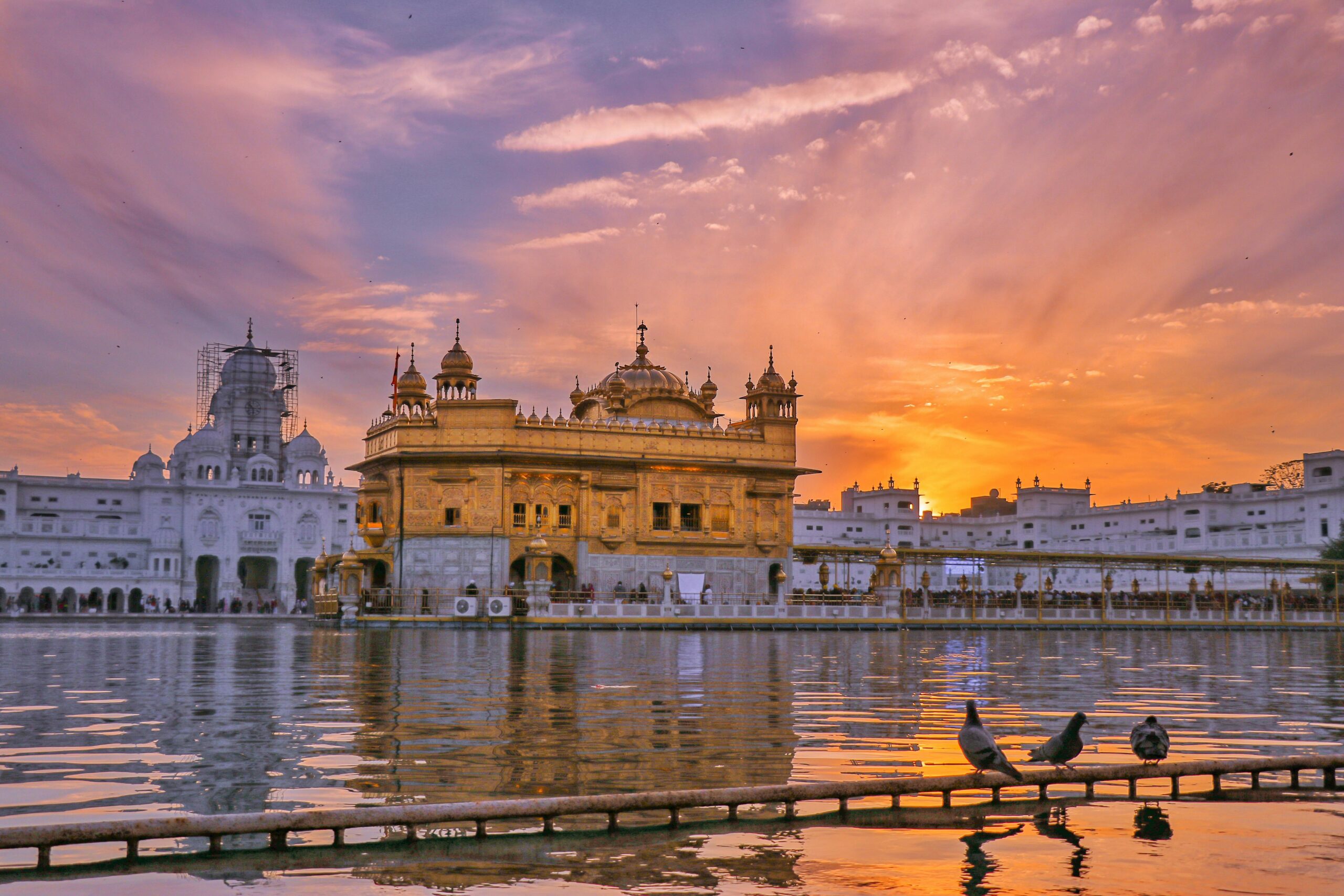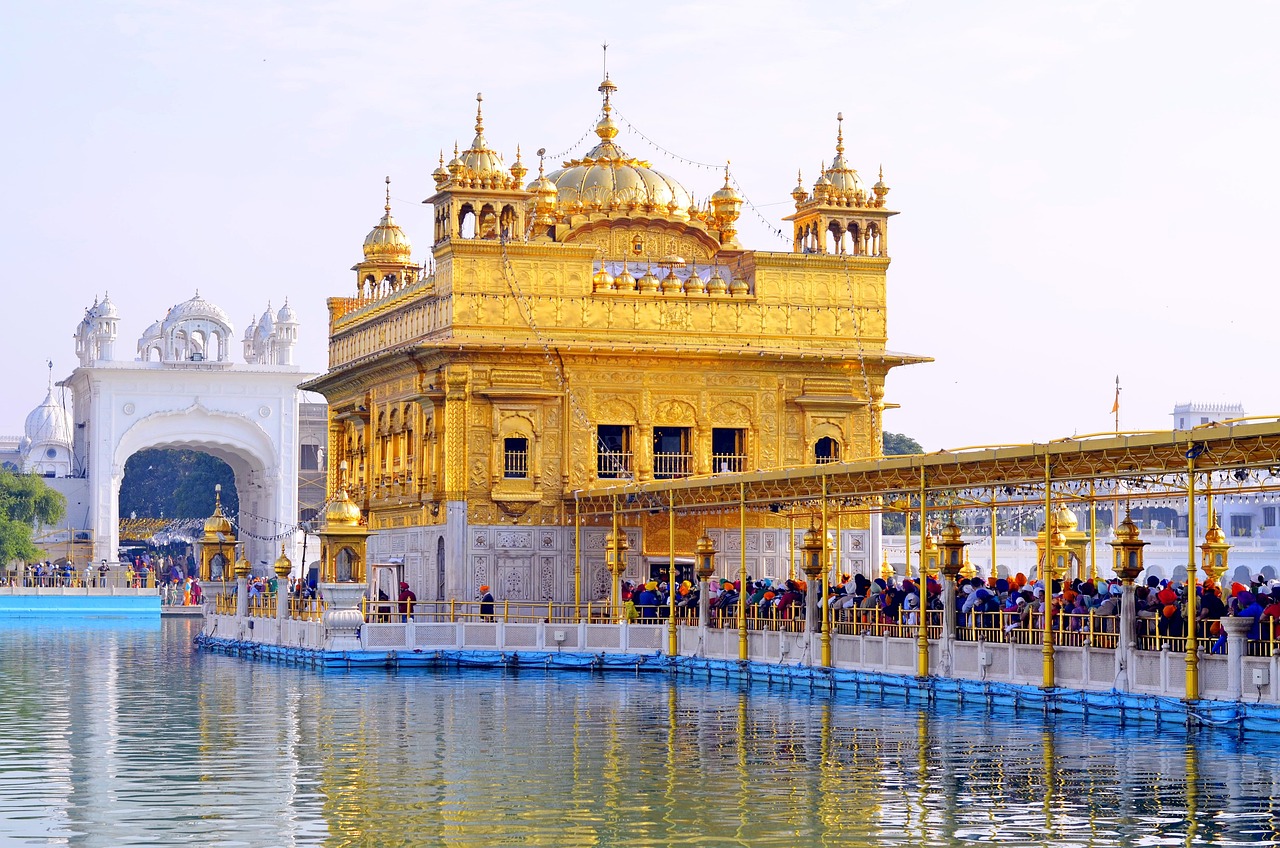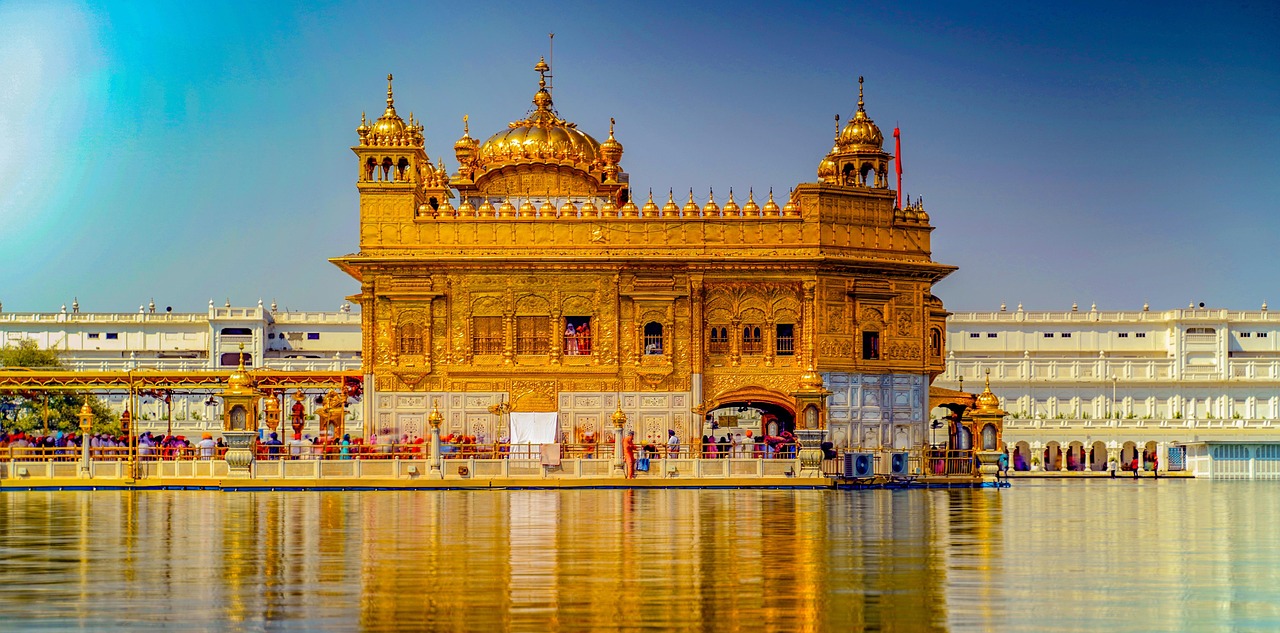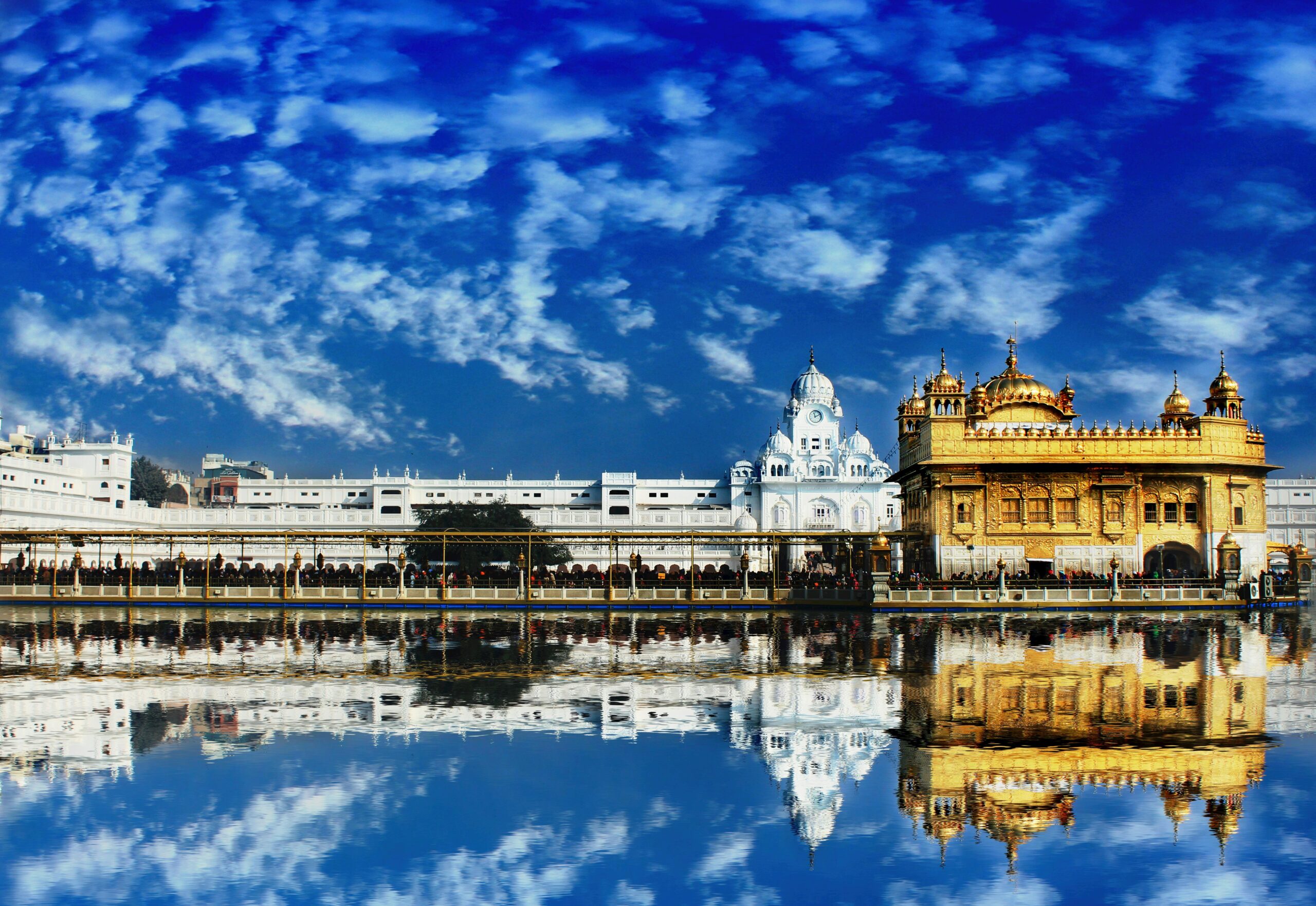The Founding of the Golden Temple: Guru Arjan Dev Ji’s Vision
Maharaja Ranjit Singh and the Golden Cladding of Harmandir Sahib
In the late 1500s, Guru Arjan Dev Ji set out to build a place unlike any other—a shrine where everyone, regardless of caste, creed, or country, could come together. The site was chosen for its peace, water, and ease of access.
Centuries later, Maharaja Ranjit Singh, ruler of the Sikh Empire, had the upper floors and domes covered in real gold. If you see the temple glowing against a sunrise, that glitter is genuine—sainchī sonā (“pure gold”), as they say in Punjabi.
Golden Temple Amritsar: A Place for All
The History and Heritage of the Golden Temple in Amritsar
The Golden Temple in Amritsar—Harmandir Sahib to locals—has been the spiritual center of Punjab for centuries. Gold glints from its domes even on cloudy days, while the Sarovar (holy pool) stays calm no matter the crowd. Visitors come from every continent—some to pray, some to learn, some just to sit quietly by the water’s edge. No one is turned away—seva(selfless service) and sangat (community) are the rule.
Guru Ram Das Ji began Amritsar as a city of peace and faith. Guru Arjan Dev Ji designed the temple with four open doors—uttar, dakhin, purb, paschim (north, south, east, west)—so everyone, from any faith or country, could walk in. That tradition of sarbat da bhala (well-being for all) continues today. The Golden Temple waits—sabh lai khula—open for all.
Symbolism Behind the Four Doors of the Golden Temple
Storms, wars, and time have tested the Golden Temple. Yet, through each loss, the Sikh community has rebuilt—stone by stone, dome by dome—with donations, volunteer work, and undimmed spirit.
This is not only a sacred site but a daily living lesson in seva (selfless service), bhaṇḍārā (community kitchen), and sarbat da bhala (“well-being for all”).
Architectural Beauty and Symbolism of the Golden Temple Amritsar
Exploring the Sacred Sarovar at the Golden Temple
- Harmandir Sahib: The golden shrine at the center, surrounded by clean, cool water—Sarovar—and linked by a marble walkway (parikrama).
- Akal Takht: In Punjabi, Takht means “throne.” This is the highest seat of temporal authority in Sikhism.
- Sikh Museum: Displays the parchaar (history) of the faith, artifacts, and the temple’s journey.
- Darshani Deori: The main gate, where you’ll step inside, covering your head, leaving shoes behind, and washing hands and feet—charḥṇī—a tradition of cleanliness and respect.
Sarovar
The Sarovar—holy pool—is not just for reflection (in water and mind), but also a place for a slow, thoughtful walk (parkikarma). At dawn and dusk, the gold and marble glow in perfect mirror images, a favorite for golden temple images.
Planning Your Visit to Harmandir Sahib: Timings, Entry, and Etiquette
Golden Temple Amritsar Opening Hours and Best Visiting Times
Golden temple timings: Open 24 hours. Early mornings (pratah), evenings (shām), and nights (rātri) each have their own mood and light.
Entry: No fee. No booking. Just sevā (service) and respect.
Dress: Modest clothes, head covered (scarves—rumāl—provided if needed), bare feet inside. In Punjabi, this tradition is called sir ūpē sohṇā (to cover the head for respect).
Photography: Chitter khedna (snapping photos) is fine outside, but not inside Sachkhand—the main prayer hall.
Best months: October to March (siālā—winter, most pleasant). Summer (garmī) is fierce; monsoon (barsāt) brings rain.
Understanding the Langar—The Community Kitchen of the Golden Temple Amritsar
The langar is a free kitchen serving roti (bread), kheer (rice pudding), dal (lentils), and Sabzi (vegetables) to all—prasaad (blessed food), no questions asked. Every day, sardars (volunteers)—young, old, men, women—serve thousands, in a lesson of naam japo, kirat karō, vand chakhō (meditate, work, and share).
Visitor Guidelines: Head Covering, Footwear, and Photography Rules
Silence in prayer areas—respect the ardās (prayer).
Wash hands and feet—hath-dhōnā, paaṝā-dhōnā—before entry.
No alcohol/tobacco inside.
Cleanliness is key—swachh safāī is a core value.
Major Festivals Celebrated at the Golden Temple: Diwali and Vaisakhi
Diwali: Thousands of lamps (diyar) light up the Sarovar. Fireworks, sweets, and prayers turn Amritsar into a city of joy.
Vaisakhi: In April, processions, gidda (dance), dhol (drum) beats, and community feasts mark the harvest and the founding of the Khalsa.
Weekly Gurbanis—hymns and recitations—fill the air, especially on Sundays (aitvar).
Exploring Local Cuisine Near Golden Temple
Amritsari Cuisine
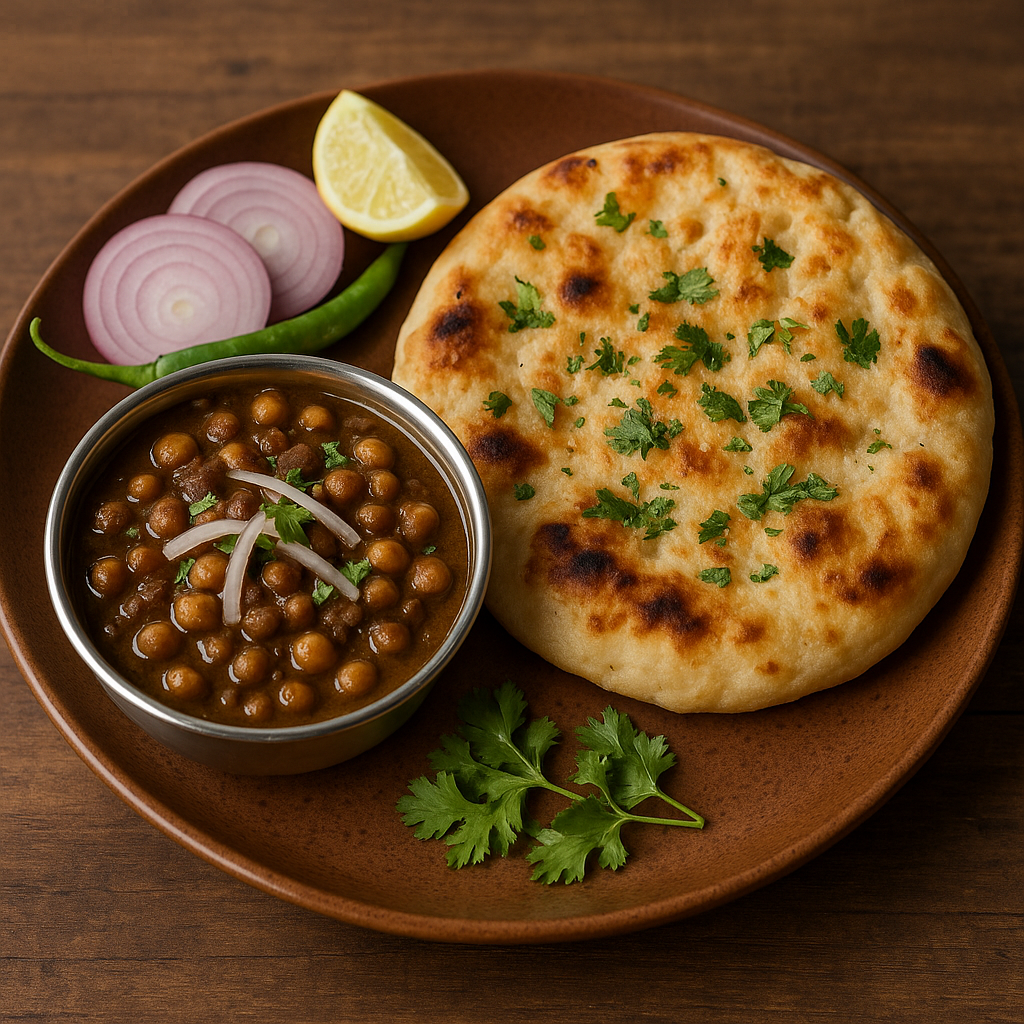
Amritsari kulcha
Amritsari kulcha—stuffed, crispy bread with spicy chole (chickpeas). Pair with lassi (thick sweet yogurt), or chur chur naan (crunchy bread). These dishes are a perfect way to enjoy rich Punjabi flavors while wandering near the Golden Temple.
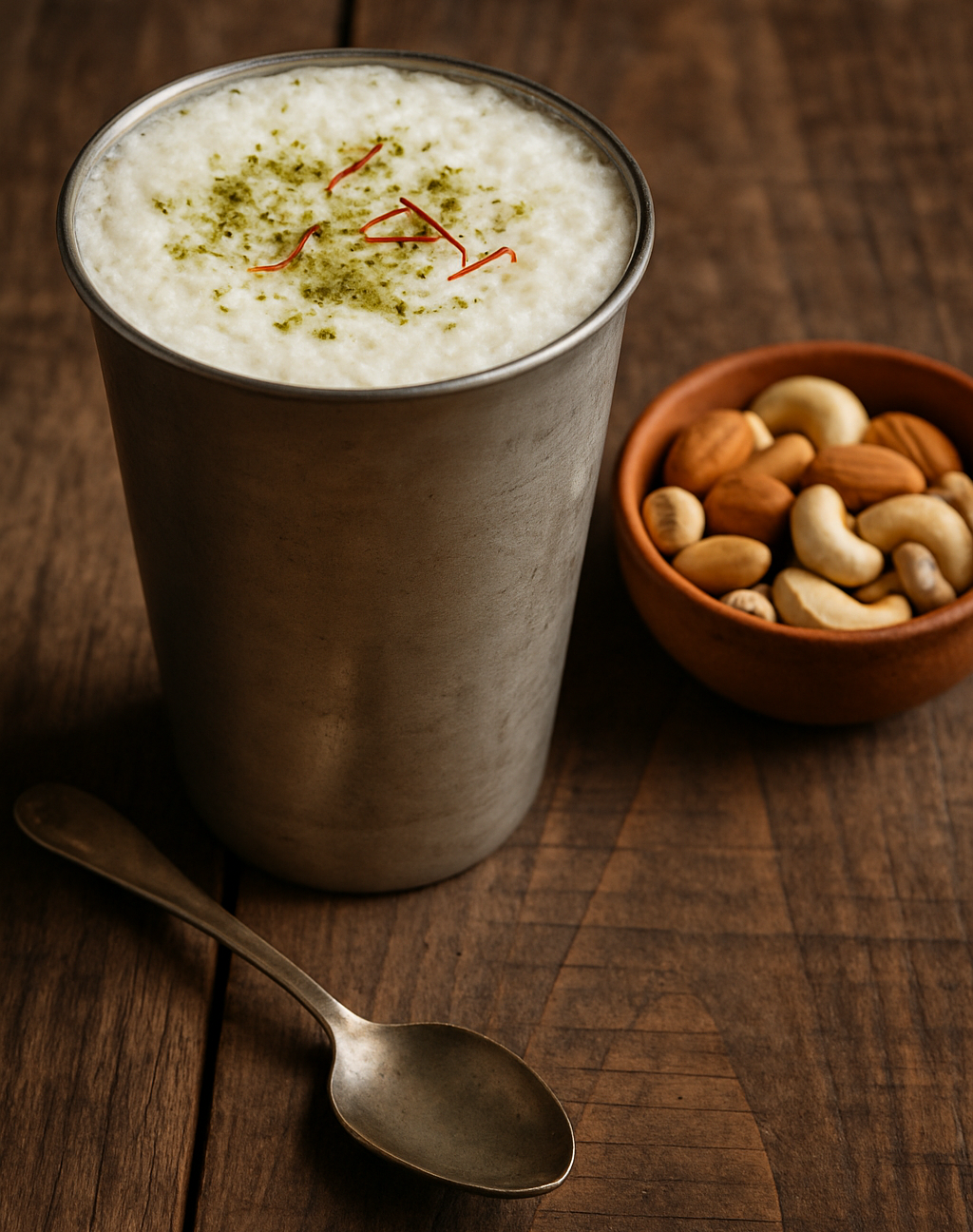
Gurdwara wali lassi
Gurdwara wali lassi—lassi shops near the temple serve the city’s best. Made fresh every day with traditional methods, this creamy drink cools visitors from the heat while offering a taste of local hospitality and culture.
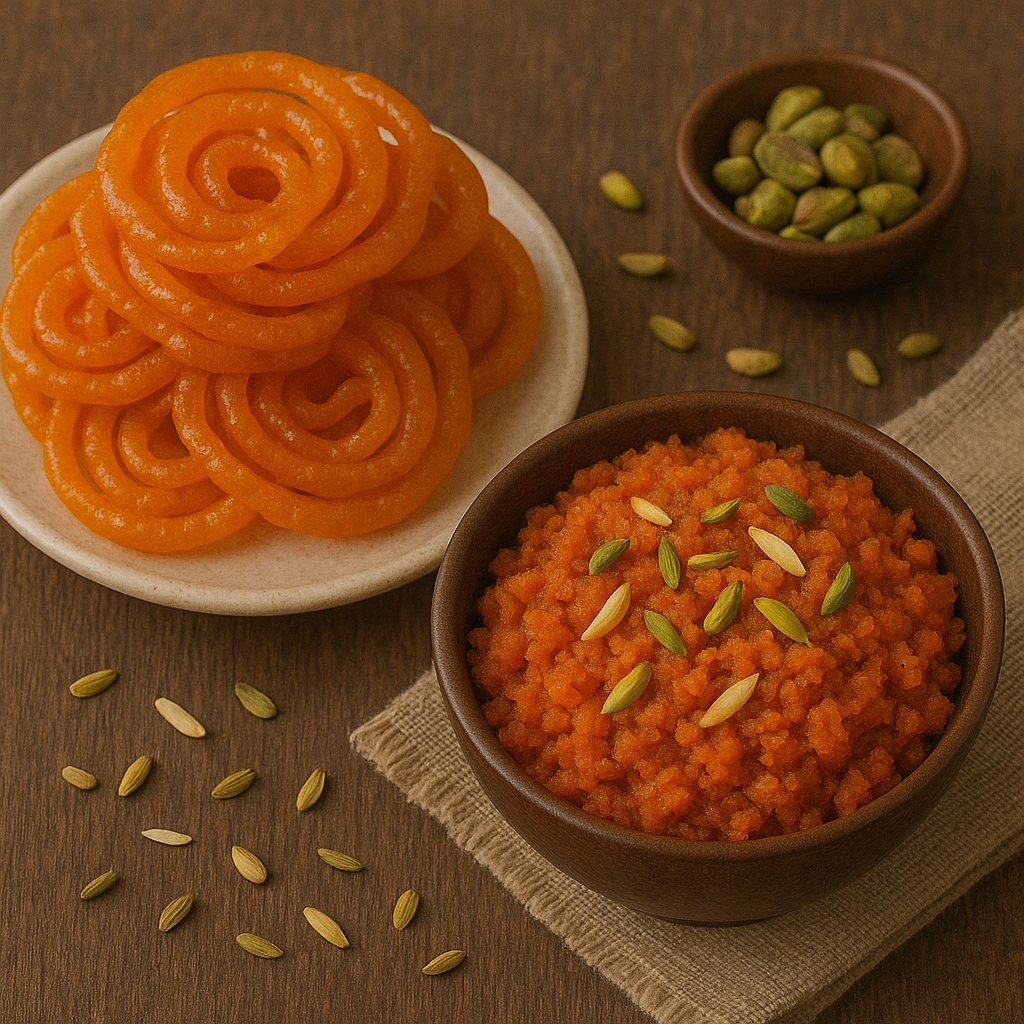
Sweets
jalebi, gajar da halwa (carrot sweet)—try them from galiān (street stalls). The aroma of these sweets fills the narrow streets, inviting visitors to experience authentic Amritsari treats that have been loved for generations.
Harmandir Sahib welcomes everyone—sarbat da bhala is the spirit. No matter your faith, language, or nation, you are invited to walk, pray, and share food at the langar. The tradition of seva and sangat (community) is for all.
never any charge to enter. Donations (dān) are optional, always voluntary.
The gates never close. Early morning (pratah) and evening (sham) offer peaceful moments. For golden temple photos, sunrise and sunset are best
Absolutely. The sangat (community) includes visitors, pilgrims, students, travelers, and neighbors. Join in serving (seva), or just quietly eat and reflect.
Yes, it’s a very safe place for families and solo travellers.
Why Visit the Golden Temple?
This isn’t just a tourist spot. It’s a place to see how a simple idea—that everyone is equal—can shape a beautiful building and daily life. You leave feeling better, less stressed, and maybe a little more hopeful about people.

